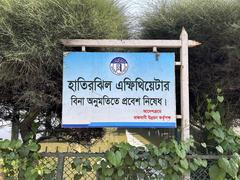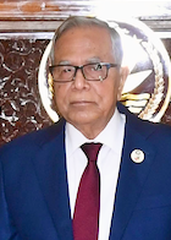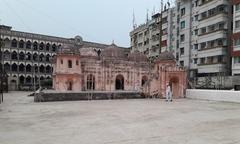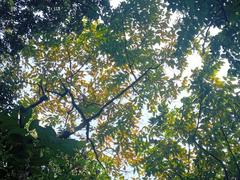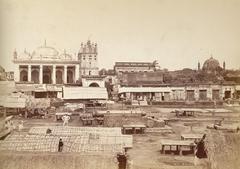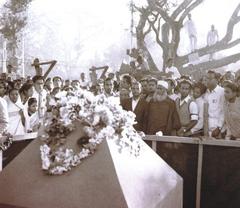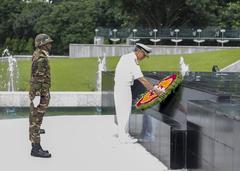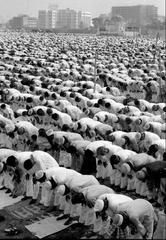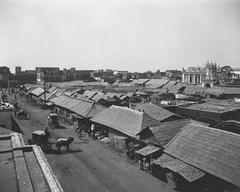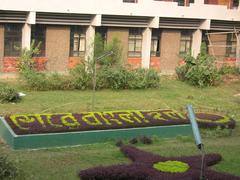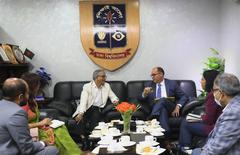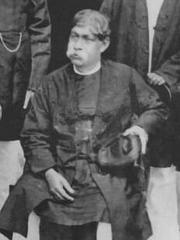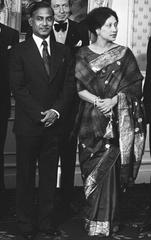Comprehensive Guide to Visiting জাতীয় স্মৃতিসৌধ (National Martyrs’ Memorial), Dhaka, Bangladesh
Published Date: 17/07/2024
Introduction to the National Martyrs’ Memorial
The National Martyrs’ Memorial, known as জাতীয় স্মৃতিসৌধ in Bengali, is an iconic monument situated in Savar, approximately 35 kilometers northwest of Dhaka, Bangladesh. This memorial stands as a solemn tribute to the brave freedom fighters who sacrificed their lives during the Bangladesh Liberation War of 1971. The war, which spanned from March 26 to December 16, 1971, was a critical period that led to Bangladesh’s independence from Pakistan. The memorial’s design, created by architect Syed Mainul Hossain, was selected through a national competition in 1972 and symbolizes the nation’s collective aspirations. Completed in 1982, the structure’s seven triangular walls represent significant phases in the country’s struggle for freedom, making it a profound symbol of national pride, unity, and resilience. Visiting the National Martyrs’ Memorial offers not only a historical journey but also a chance to engage with the cultural and educational aspects of Bangladesh’s heritage, making it a must-visit for both locals and tourists alike.
Table of Contents
- Introduction
- History of the National Martyrs’ Memorial
- Architectural Features
- Visitor Information
- Nearby Attractions
- Cultural and Educational Impact
- Preservation and Maintenance
- Future Developments
- Conclusion
- FAQ
History of the National Martyrs’ Memorial
Origins and Conceptualization
The idea for the National Martyrs’ Memorial was conceived to honor the valiant freedom fighters of the Bangladesh Liberation War of 1971, which resulted in the independence of Bangladesh from Pakistan. This war, lasting from March 26 to December 16, 1971, was a pivotal moment in the nation’s history, and the need for a national monument was deeply felt.
Design Competition and Selection
In 1972, the Government of Bangladesh announced a national design competition for the memorial. Architect Syed Mainul Hossain’s design was selected from 57 entries, reflecting the nation’s collective aspirations. His vision for the memorial was both symbolic and monumental.
Construction and Development
Construction began in 1978 and was completed in 1982, overseen by the Public Works Department of Bangladesh. The memorial is situated in Savar, approximately 35 kilometers northwest of Dhaka, chosen for its serene and expansive landscape. Despite logistical challenges, the project was completed within the planned timeframe.
Architectural Features
The National Martyrs’ Memorial is an architectural marvel characterized by its simplicity and grandeur. It consists of seven triangular concrete walls representing significant phases in Bangladesh’s struggle for independence. The tallest wall stands at 150 feet (46 meters). The memorial complex includes a reflecting pool, an artificial lake, and beautifully landscaped gardens, covering approximately 84 acres.
Visitor Information
Opening Hours and Tickets
The National Martyrs’ Memorial is open daily from 8:00 AM to 6:00 PM. There is no admission fee, making it accessible to all visitors.
Travel Tips
- Best Time to Visit: Early morning or late afternoon to avoid the midday heat.
- What to Wear: Comfortable clothing and shoes suitable for walking.
- Photography: The memorial offers several picturesque spots, especially around the reflecting pool. Photography is allowed, but be respectful of the site’s solemn nature.
Accessibility
Efforts are being made to enhance the accessibility of the memorial for visitors with disabilities. This includes the installation of ramps, tactile paving, and audio guides.
Nearby Attractions
- Savar National Botanical Garden: Located nearby, this garden offers a peaceful retreat with a variety of plant species.
- Jatiyo Sangsad Bhaban (National Parliament House): A significant architectural landmark in Dhaka designed by Louis Kahn.
- Ahsan Manzil: A historical palace museum in Dhaka, showcasing the heritage of the city.
Cultural and Educational Impact
The memorial serves as an important cultural and educational site. Schools and educational institutions frequently organize trips to the memorial, providing students with an opportunity to connect with their nation’s history. The site is also used for cultural events, including poetry readings, musical performances, and art exhibitions.
Preservation and Maintenance
Maintained by the Ministry of Liberation War Affairs, regular upkeep ensures the memorial remains in pristine condition. Recent efforts include installing informative plaques, signs, and guided tours to enhance visitor experience.
Future Developments
Plans are underway to further develop the memorial complex, including the construction of a museum dedicated to the Liberation War. This museum will house artifacts, photographs, and documents related to the war. Additionally, there are plans to improve accessibility for visitors with disabilities.
Conclusion
The National Martyrs’ Memorial stands as a testament to the sacrifices made by the people of Bangladesh in their quest for independence. It is a place of reflection, education, and national pride. Whether you’re a local resident or a visitor from abroad, the memorial offers a profound and enriching experience. For more information, visit the official website of the Ministry of Liberation War Affairs.
FAQ
What are the opening hours of the National Martyrs’ Memorial?
- The memorial is open daily from 8:00 AM to 6:00 PM.
How much does it cost to visit the National Martyrs’ Memorial?
- There is no admission fee; entry is free for all visitors.
Are there guided tours available?
- Yes, guided tours are available and provide in-depth information about the memorial’s history and significance.
Is the National Martyrs’ Memorial accessible to visitors with disabilities?
- Efforts are being made to enhance accessibility, including ramps, tactile paving, and audio guides.
For more updates, follow us on social media or download our mobile app Audiala.
Summary and Key Takeaways
The National Martyrs’ Memorial in Savar stands as a testament to the resilience, courage, and unity of the Bangladeshi people during their struggle for independence in 1971. This monumental site, with its striking architectural design and profound historical significance, offers visitors a unique opportunity to connect deeply with the nation’s past. The memorial is not just a place of remembrance but also a space for education and cultural enrichment. It serves as a poignant reminder of the sacrifices made by countless individuals for the freedom of Bangladesh and continues to inspire future generations. Whether you are a history enthusiast, a student, or a casual traveler, a visit to the National Martyrs’ Memorial provides a profound and enriching experience that underscores the values of freedom, justice, and national pride. For those planning a visit, the memorial is easily accessible from Dhaka, open daily, and free to enter, making it an essential stop on any itinerary exploring Bangladesh’s rich historical and cultural landscape.
Reliable Sources and Further Reading
- Ministry of Liberation War Affairs. (n.d.). Official Website http://www.molwa.gov.bd
- National Martyrs’ Memorial. (n.d.). Official Website http://www.martyrsmemorial.gov.bd
- Visit Bangladesh. (n.d.). Official Tourism Website http://www.visitbangladesh.gov.bd


